Tenkara Nymphing from the Source: Video and Illustrated Blog Guide with Shin Takahashi
The first fish I caught on a tenkara rod was with a dry caddis on a borrowed rod. Probably the next 200 or so fish were on euro nymph patterns with my own, first, tenkara rod (a TUSA Iwana) using tenkara nymphing tactics. BUT I didn’t start fishing “tenkara” until later – and that distinction is vital…This article aims to boost your success while nymphing by sharing tips, special interview video content and rigs. First let’s check out the video with “the man” Shin Takahashi (高橋伸)…
Tenkara nymphing on Tenkara in Focus Season 3 Ep1 (テンカラ ニンフィング” 高橋伸)
In Shin Takahashi’s interview below (and our “Field report” video and e-books covering his style), you can see how productive it can be to combine euro nymphing tactics with tenkara knowledge and gear. I’ve also put together some rig diagrams and descriptions further down in this article for you.
Click here to enrol on Takahashi-san’s Masterclass online course.
Tenkara Nymphing: Getting the Best Results
A WARNING to the WISE: I only started to get real, additional, benefits for my nymph fishing AND my tenkara fishing when I began to learn Japanese tenkara. Don’t hate me for saying that – and try to look hard before deciding that can’t be true for you. OK, it does sound strange at first – but really it just comes down to the tried and tested idea of “cross training”.
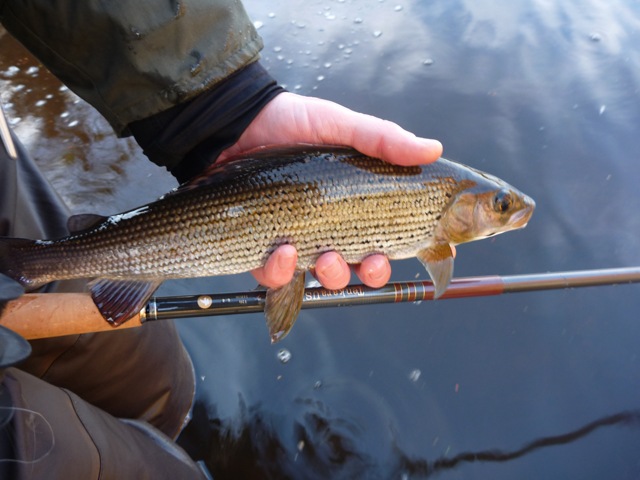
I don’t care what sport or activity you’re in, the biggest pitfall to cross-training is having a poor understanding of any (or all) the different disciplines that you are combining. Cross training is not simply dicking around and creating a random “pick ‘n mix” of things that you fancy. So, although tenkara rods are great tools for fishing Euro nymphing tactics, you can improve your success by paying close attention to both competition nymphing and a wide range of Japanese tenkara techniques.
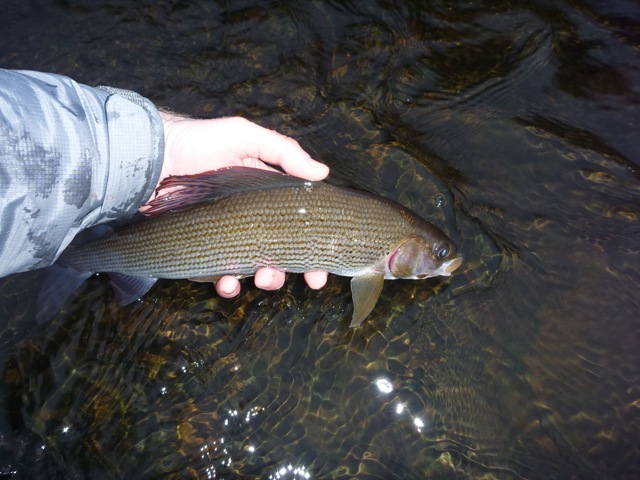
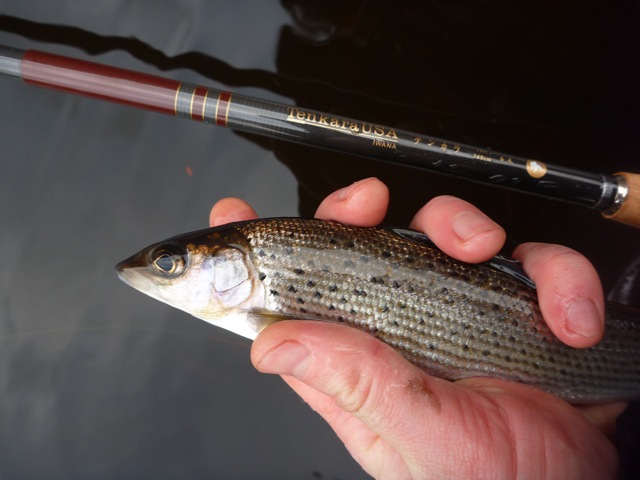
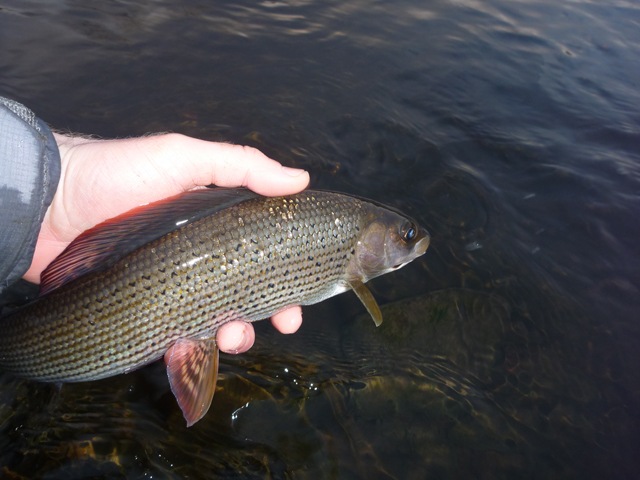
To make cross-training work best, you need a solid understanding of how one school of activity boosts your ability in another. To do that, you need to understand BOTH schools extremely well. Otherwise you end up relying on the strengths of one thing covering up a lack of ability in another area – and your progress hits a plateau (and you get bored/give up/move on to the next “shiny object”).
So (at the risk of over-emphasising the point)…
Don’t ignore the “Tenkara” in Tenkara nymphing
In case it is not obvious from the TiF Episode above, Shin Takahashi is a LEGIT tenkara angler (top few percentile) with an extensive, successful base in fishing Japanese tenkara tactics using unweighted kebari (Japanese tenkara flies).
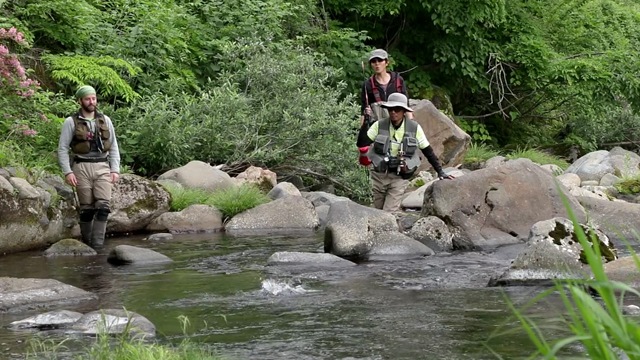
It was his exceptional ability in tenkara and his natural desire to learn and improve that made him interested in seeking out information on the European competition methods of fishing in rivers. He read as much Euro nymphing and competition fishing material as he could get his hands on – as well as speaking to other top anglers who could help inform him. He recognised the skill, knowledge and achievement of those anglers in the West who had developed and tested competition nymphing tactics.
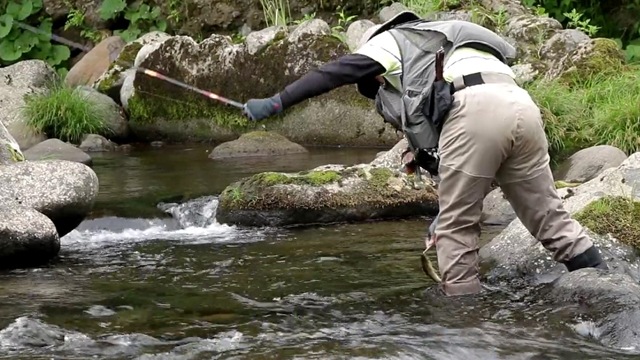
Then, using what he already knew about tenkara, he took the mechanics and flies of competition fishing methods and combined them all. The most important step in that was using his deep knowledge of FISH habits and rivers to design rigs and presentations using his combined knowledge and discoveries.
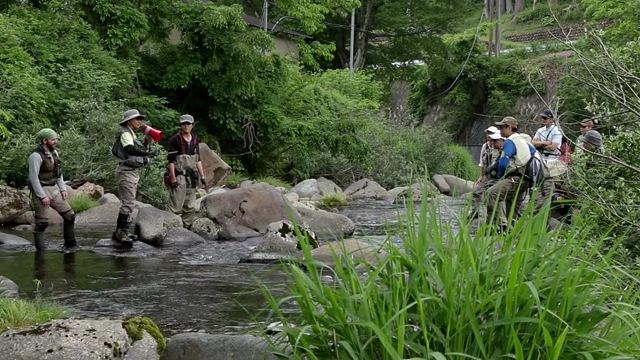
That is the most important thing – always work backwards from the fish to design effective tactics.
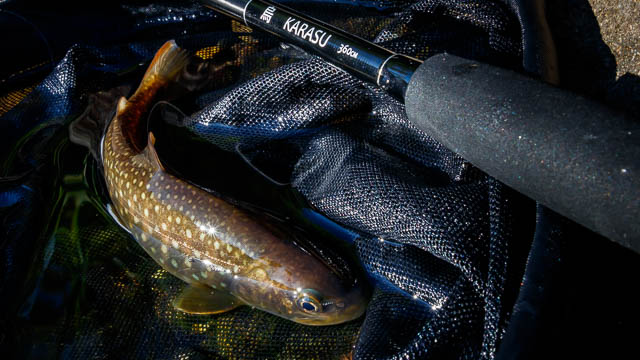
So – I urge you to learn about fish, rivers and authentic Japanese tenkara tactics as you can (you’ll find resources for all that on the Discover Tenkara site). As one, very simple – but very powerful – example: try combining named Japanese fly manipulation (sasoi) techniques with European nymphing, streamer fishing and even western dry fly fishing and see the results for yourself.
Tenkara nymphing gear
Takahashi-san’s rig in the video consists of a Japanese bait-fishing rod for medium-sized rivers (often called “keiryu rods”). His preferred tenkara nymphing model – the Diawa Sagiri – has a very sensitive action and is lockable at two different lengths (3.4m and 3.9m). Many sensitive-action tenkara rods or even specialist fly rods (rated AFTM #2 or less and 10ft+ in length) could be used for tenkara nymphing. Of course, the approach is more typically associated with “fixed line” rods – rather than rod & reel setups.
Another detail to note is that Takahashi san was only using the small “ball” shaped indicator for the benefit of his pupils who were standing some distance away on the opposite bank of the river.
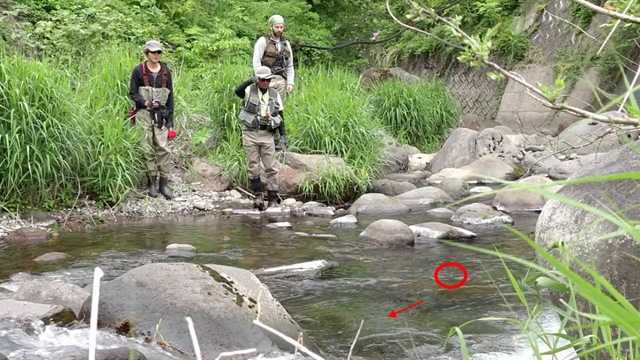
Normally he would just take advantage of the dyed fluorocarbon tenkara level line to detect when a fish grabs his fly. The important thing to notice is that he is still treating the indicator as part of the natural curve of his tippet (often holding it off the water). He is NOT using it like a mop indicator or a “bobber” to suspend weighted nymphs.
It is much more like a marker or tracer for his line while he maintains gentle “contact” throughout his rig.
BTW – if you’re not totally clear on the idea of “contact” and how to keep your rig from rod tip to fly in the right position to maintain it at all times – you’ll really benefit from our free email tutorials.
Click Here to Sign Up to The Free Tutorials
Tenkara nymphing rigs vs Regular Euro nymphing rigs
OK, the differences are generally quite slight and this is natural given that folks like Takahashi-san have researched Euro nymphing and then applied it using their own gear. So, in place of both a knotted, tapered “French Leader” and braid or mono “indicator” section – you’ll find a coloured tenkara level line.
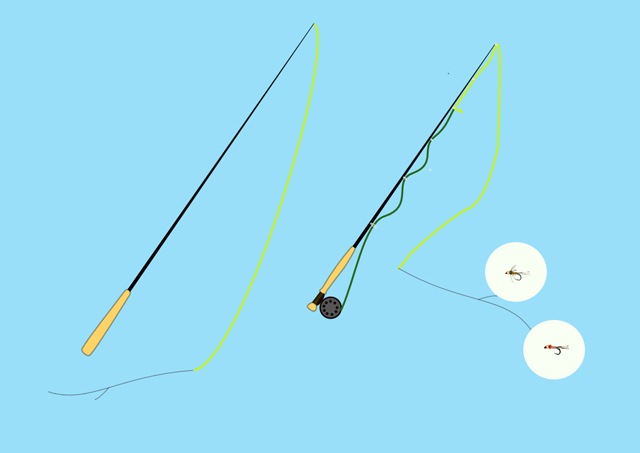
This provides both the casting turnover and a way to detect takes in the same way a section of indicator line would. For most folks a good “all round” general tenkara level line specification would be a coloured fluorocarbon line with a diameter rating of #3 on the Japanese scale. For greater sensitivity and reduced “drape otsuri” a #2.5 level line can be a great option. Takahashi-san likes to use an ultralight #2 Fluorocarbon level line for his tenkara and tenkara-nymphing. For Japanese line-sizes vs. diameters in mm – check our our handy conversion table by clicking onto our Tenkara Lines Guide page and scrolling down…
The line will generally be around the length of the rod – and then a tippet of between three to four feet for a single fly and around 5ft for two flies (where permitted by fishery rules). For two flies, a good “stand by” effective spacing is often around 3ft from the end of the tenkara casting line to the dropper and then another 2ft to the point or “tail” fly.
Since these tactics are generally used for difficult fish, tippet diameters in the 0.10 mm to 0.12 mm range are typical.
Suitable flies
A strong influence of European competition nymphs made with small tungsten bead-heads is easy to see for tenkara nymphing tactics in Japan.
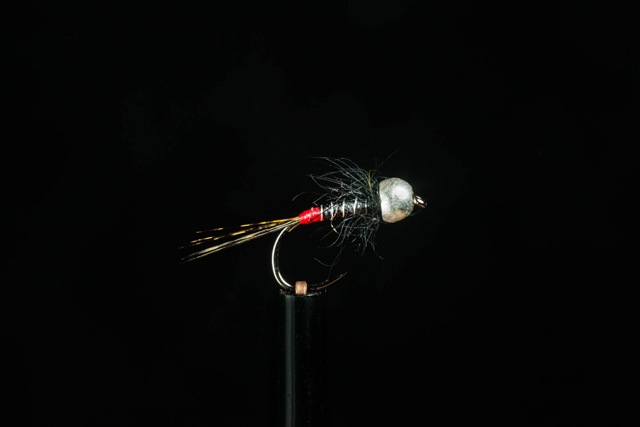
These are generally small and light with beads in the 2.5 to 2.8mm range – or else using slim underbodies of lead wire. Referring to good sources of information on small competition nymph patterns will keep you right on track (and you can discover Takahashi-san’s 6 favourite patterns in his Bundle). In his interiew, you will notice that he makes special mention of “Perdigon” nymphs too.
There is also a lot of potential to cross over into bead-head versions of Japanese tenkara flies (bead head kebari) with these tactics. That is really when developing a strong understanding of keiryu and honryu tenkara will help to keep your on-stream “game” strong and well-rounded.
Basic Methods
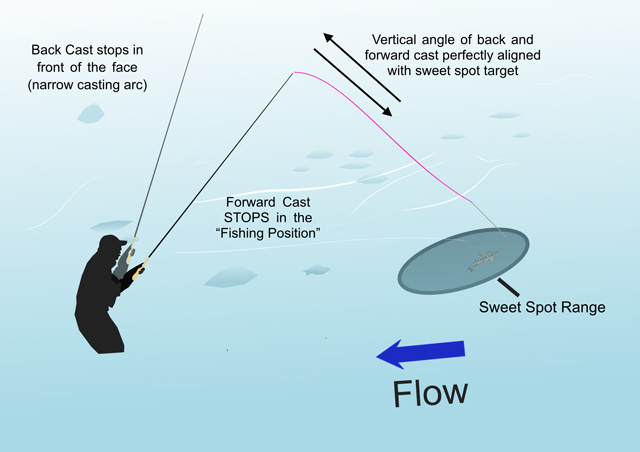
Many of the features of good, basic “dead drift” tenkara tactics appear in both regular Euro nymphing and the closely-related tenkara nymphing styles. These include:
- Delivering the flies onto the water without letting the casting line/French leader touch down.
- Casts are generally upstream or up and across stream.
- You should also hold whatever amount of tippet is necessary to fish your fly/flies at the desired depth in the water OFF the water’s surface. Don’t just robotically always hold the tip of the casting line (i.e. your strike indicator) the same distance above the water on every cast.
- Then track your nymphs over a short downstream drift – of course making sure to swim the fly through prime lies. Set the hook at any interruption of the natural downstream progress of either tippet or tenkara casting line (or any sign of a fish turning on the fly sub-surface). If you’re already well-versed in Euro nymphing, then this is very familiar territory.
For that reason I really encourage you to avoid confusing these “tenkara nymphing” tactics with regular “tenkara”, because you’ll limit your success and scope to improve. If you decide that’s all there is to EITHER nymphing or tenkara, that leaves a big gap in your tactics toolbox.
Paul
PS – Did you find this guidance useful? Why not spread the love by sharing the article on social media or via email…

Well worth the money, if only to see how many people you can get in a pool and still catch fish, looking forward to your next book, excellent stuff.
Ian – thank you so much for taking the time out to share your (positive) experience; we really appreciate it – particularly as it is often a more compelling urge to leave feedback after a bad experience! I hope that the extra details in the e-book catch you lots of bonus fish this season.
Paul
As always, another excellent Episode. You guys are truly Tenkara gems.
David – as always, thank you for going out of your way to send positive thoughts and opinions. It really is the fuel that keeps us going – Thank you!
Paul
Excellent series of articles. Oh to have had access to this amazing info when I first started tenkara!
I think this “bundle” might be my most watched – it’s nice to see the interview after seeing Takahashi fish, he certainly reveals some fundamental insights to his rounded ability. There might not be space here but what did you think Uberto meant when he says Takahashi approaches the stream as a western comp angler typically would?
I had my thoughts but would love to know your view.
Hi Justin – without developing this into too much of an essay – there’s probably a few layers to Ubi’s comment.
First of all, there is the comprehensive way that Takahashi-san is “combing” the fly through the most likely lies – and also using quite small, subtle fly patterns with just the right amount of weight to offer them at the eye-level of the fish. He is not asking the fish to work too hard to take his fly! Next, there is the consideration of the perfect sequence place each cast to each aiming-point in the right order to avoid spooking fish. As with successful competition anglers, Takahashi-san has very good “cast sequence selection”. Of course there are basic similarities like the rod-angle, how the “contact” is maintained through the tippet and how the casting line is held off the water whenever possible, the length of the drift and other broad mechanical similarities…
Over and above that, having spoken to Ubi, I really remember a stand-out quote from him which was made by his coach when he fished on the Italian Fly Fishing youth team…To paraphrase, Ubi’s coach said that it was vital to remember that you can control every element of nymph fishing like an exact science. In that way it is like a maths or engineering problem – where you have total and exact control over all the parameters. In that way you need to think about the physical properties of the flies – how they sink, what depth they will swim at and how that is affected by the tension and thickness of the tippet and so on. The overall idea is that the competition nymph angler and their rig make a single unit that is like a finely-tuned instrument. By varying the individual components (over which you have a fine degree of control) and the way that you deliver and track those components through the water – you are able to systematically find the optimum “solution”. So, I can only imagine that whenever Ubi says that he recognises qualities of top level competition nymph angling in Takahashi-san’s approach that this idea of the scientific dissection of the challenge at hand is very much on his mind too.
Paul
Great thanks Paul